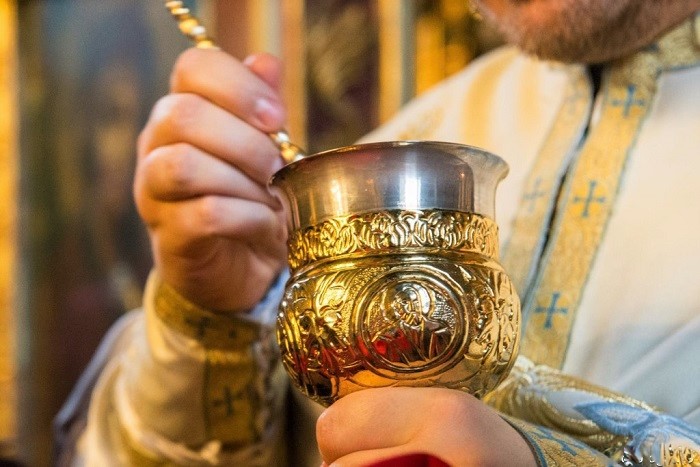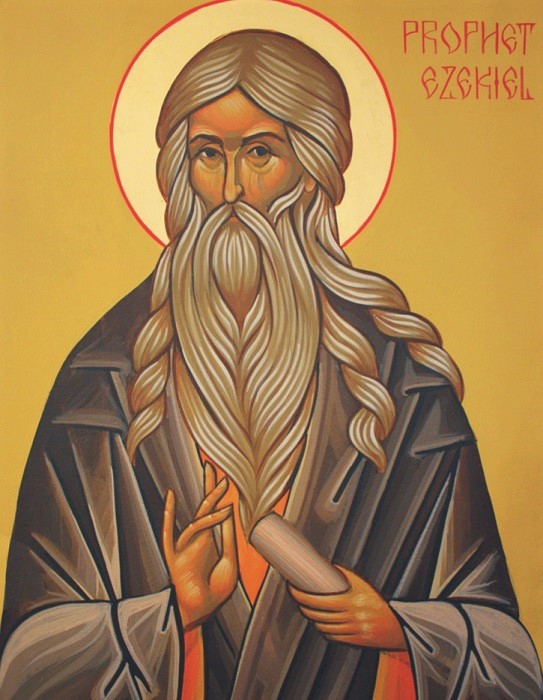
There is a boundless diversity of meanings of the Holy Scriptures, which allow for a vast field for interpretation. The Bible is not just a collection of sacred texts that have long been explained and studied. It is the living Word of the Living God, which will always nourish and instruct the Church. More often than not, when we read a certain paragraph, we fail to notice its core message and don’t let it sink in but there comes a time when that paragraph rips open to us, and we are amazed of our own inability to notice that. It is thanks to the limitlessness of the Word of God that new methods of Scriptural exegesis are born. Liturgical hermeneutics is one such method.
This method has demonstrated the ongoing connection between the Scripture of the Church and the Liturgy of the Church and their internal and external unity. More and more biblical scholars come to the conclusion that the canon of the Bible was shaped by the worship of the Church. The Scripture reflects the worship practice of the redeemed God’s people and teaches how to serve God properly and to stay faithful to his New Testament, which is supported and renewed during the Liturgy. Here is an example of liturgical exegesis of biblical texts based on one of the main topics of the Holy Bible: the creation of the world and man. We are going to see that the reason and purpose of the creation of man was liturgical. Man was meant to be not only Homo Sapiens but also Homo Liturgicus.
1. Liturgical Language of Creation Story.
Before we deal with the human being’s liturgical calling and the texts of the Bible that prove it, let’s say a couple of words about the language of the Holy Scriptures. Commentators have long noticed the unique liturgical terminology and rhythm of the creation story. Genesis 1 reads like a hymn and it was possibly polished by everyday worship by the Israelites of the Old Testament. The first verse of the chapter consists of seven Hebrew words. The creation narrative is a series of seven instances of creation, introduced by seven verbal acts of God (Let there be…) The chapter resembles an Orthodox litany. The language of the Bible helps us to realize the importance of worship, which inspired its authors.

2. The Creation of the Cosmos and the Construction of the Temple Share the Same Goal. Intertextual analysis has allowed us to notice linguistic and thematic parallels between the Creation narrative and the subsequent construction of the Tabernacle of Covenant (Exodus 25-40). It has opened our eyes to the intention of the author of Genesis. He attempted to describe the creation of the world as the making of the cosmic Temple, our house of the Lord, which, like the Tabernacle and the Temple of Solomon, is the place where man, created in God’s image and likeness, meets God. The second creation story in Chapter 2 and 3 describes the Garden of Eden symbolically as an early sanctuary, again in parallel with later sanctuaries, especially the Holy of Holies of the Temple.
God is said to be walking (הלך) in the Garden (Gen. 3:8). The same Hebrew verb is used to describe God’s presence in the Tabernacle (Leviticus 26:12, Deuteronomy 23:15, 2 Sam. 7:6-7). Adam’s job in the Garden of Eden is to serve (עבד) and protect (שמר). The same words are used in a similar context in the Pentateuch to depict the liturgical service of Jewish priests and Levites in the sanctuary. These literary hints may point at the author’s intention to describe the creation as the construction of the royal palace by the King of Heaven. Man is portrayed as a royal priest, called to manage the affairs of the temple and the kingdom of God as his regent or a prince. Unfortunately, the high calling involves the possibility of failure and falling out of the relationship with God.

3. Man’s Rejection of His Liturgical Calling. This liturgical interpretation of Genesis is confirmed intertextually in other passages of the Old Testament. One of the most accurate intrabiblical references to Adam’s original calling is Ezekiel’s famous lamentation for the prince of Tyrus (Ezekiel 28:1-19). Ezekiel portrays the prince as having been created in Eden, the Garden of God and the holy mountain of God, which is another symbol of the Temple. The prince of Tyrus walks up and down in the midst (הלך) of the stones of fire, which are associated with the presence of God elsewhere. He is marked by a seal of perfection. He is full of wisdom and perfect in beauty (See Ezekiel 28:12), underscoring his royal status and power. The prince wears the same stones as the Jewish high priest; the same stones can be found in the land washed by the river that flows from the Paradise (See Ezekiel 28:13, Exodus 28:17-20, Gen. 2:12). Given that the prince of Tyrus is taken to symbolize Adam and the high priest, his sin is likewise characterized as sacrilege and blasphemy and is punished by expungement and defrocking, which happened to Adam. The prince’s and Adam’s sin was his desire to be like God. The prince was a Cherub who was cast away from the face of the Lord as profane for defiling God’s sanctuary. The words, I will bring thee to ashes (Ezekiel 28:18) may allude to the words that God said to Adam, for dust thou art, and unto dust shalt thou return (Gen. 3:19).
These little examples may reveal to us an exciting aspect of human calling and the essential meaning of our existence, which was known to the ancients but is long forgotten by now. Man was created to communicate with God, that is, for worship, which includes prayers, the offering of praise and reverence, as well as special liturgical rituals that connect our world to the world of the Divine. Man is the king and the priest. He is a leitourgos and God’s son by grace. The Orthodox Church regards the Liturgy as the pivot of its existence, so the recognition of the vital connection between the Scripture and the Liturgy and the appreciation of the liturgical calling of all human beings is very important for the Church. Liturgical hermeneutics is key to the successful Orthodox mission and victory over secularism.



